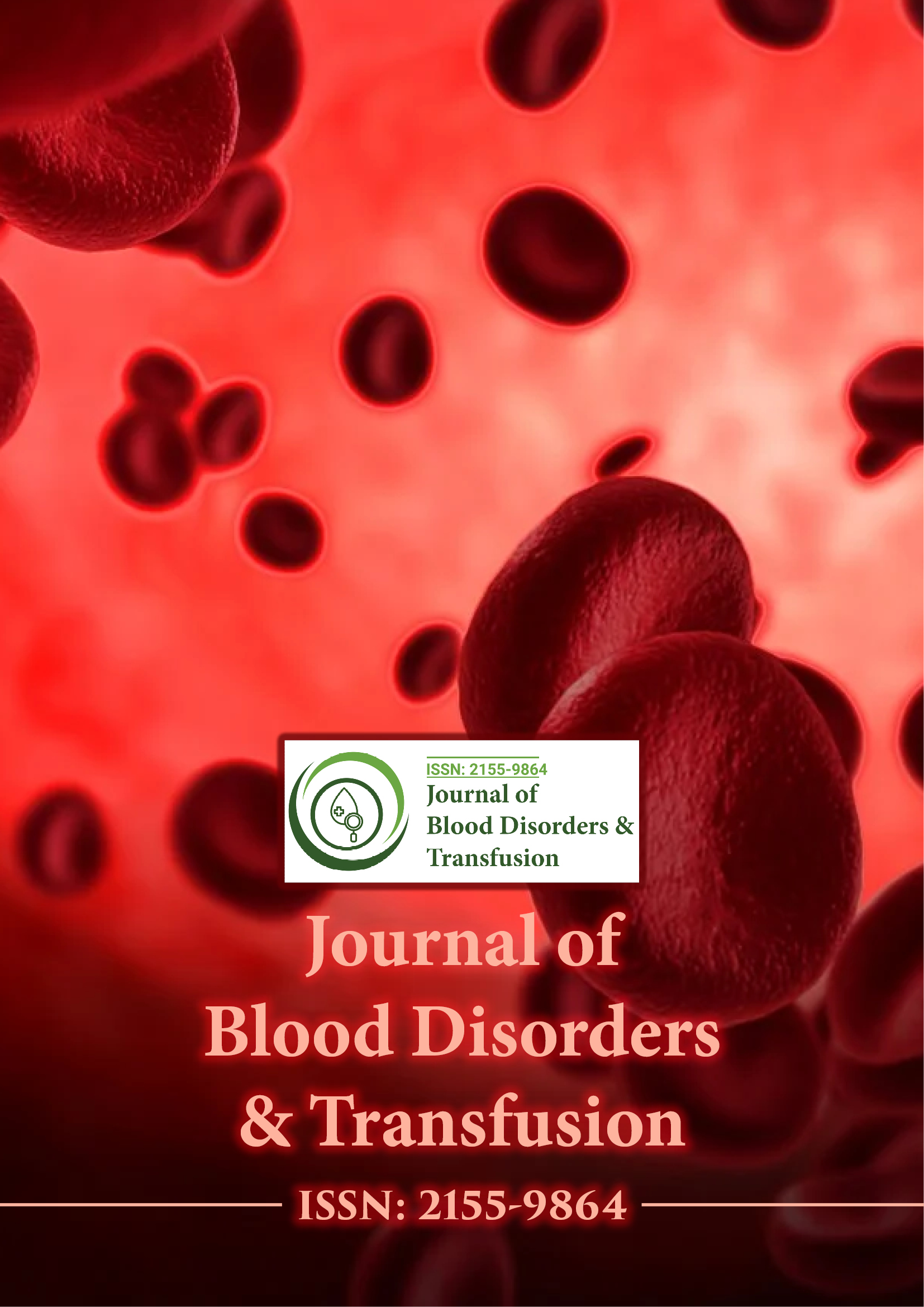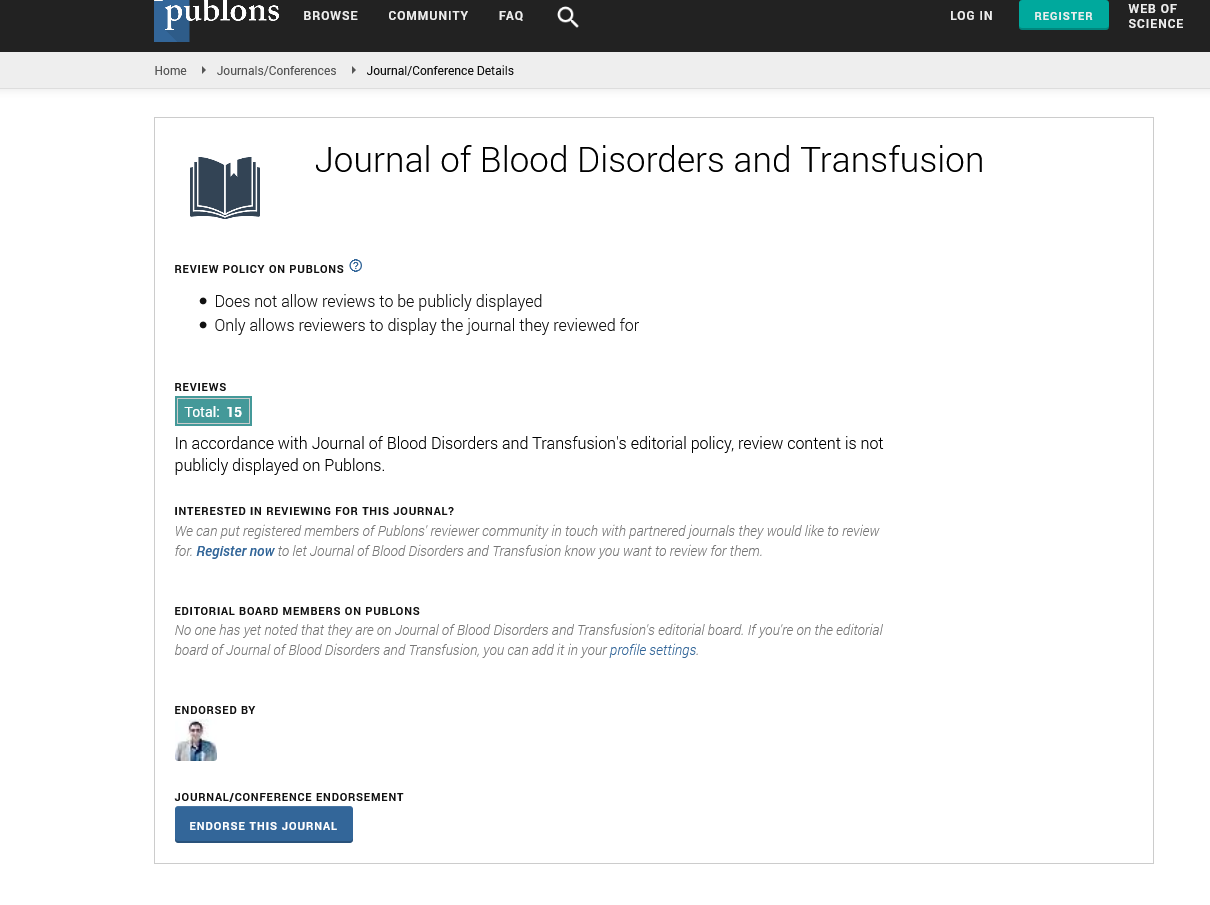Indexed In
- Open J Gate
- Genamics JournalSeek
- JournalTOCs
- Ulrich's Periodicals Directory
- RefSeek
- Hamdard University
- EBSCO A-Z
- OCLC- WorldCat
- Proquest Summons
- Publons
- Geneva Foundation for Medical Education and Research
- Euro Pub
- Google Scholar
Useful Links
Share This Page
Journal Flyer

Open Access Journals
- Agri and Aquaculture
- Biochemistry
- Bioinformatics & Systems Biology
- Business & Management
- Chemistry
- Clinical Sciences
- Engineering
- Food & Nutrition
- General Science
- Genetics & Molecular Biology
- Immunology & Microbiology
- Medical Sciences
- Neuroscience & Psychology
- Nursing & Health Care
- Pharmaceutical Sciences
Opinion - (2025) Volume 0, Issue 0
Advances in Point-of-Care Testing for Hemostatic Function
Vasco Fausto*Received: 26-May-2025, Manuscript No. JBDT-25-29782; Editor assigned: 28-May-2025, Pre QC No. JBDT-25-29782 (PQ); Reviewed: 11-Jun-2025, QC No. JBDT-25-29782; Revised: 18-Jun-2025, Manuscript No. JBDT-25-29782 (R); Published: 25-Jun-2025, DOI: 10.4172/2155-9864.25.S14.068
Description
Point-Of-Care Testing (POCT) for hemostatic function has become increasingly important in clinical practice for rapid assessment of coagulation status. Traditional laboratory assays often require extended processing times, delaying critical decisions in emergency and perioperative settings. Advances in POCT technologies allow real-time evaluation of coagulation, platelet function and fibrinolysis at the bedside. This article examines recent developments in devices and techniques, their clinical applications, advantages and limitations and the impact on patient management and outcomes.
Hemostasis is a complex physiological process involving the interaction of vascular endothelium, platelets, coagulation factors and fibrinolytic pathways. Accurate and timely assessment of hemostatic function is essential in multiple clinical scenarios, including trauma, surgery, anticoagulant therapy and bleeding disorders. Conventional laboratory tests, such as prothrombin time, activated partial thromboplastin time and platelet counts, require centralized laboratory facilities and may not provide immediate results. Point-of-care testing offers rapid analysis, enabling clinicians to make informed decisions in real time. Recent technological advancements have improved device accuracy, usability and clinical integration.
Types of point-of-care hemostatic tests
Point-of-care testing for hemostasis includes various modalities assessing different aspects of coagulation. Viscoelastic assays, such as Thromboelastography (TEG) and Rotational Thromboelastometry (ROTEM), provide dynamic evaluation of clot formation, strength and lysis. Platelet function can be assessed using whole blood impedance aggregometry or platelet function analyzers. Coagulation factor levels and fibrinolytic activity may be measured using chromogenic assays adapted for point-of-care use. These technologies offer comprehensive insight into the hemostatic profile of patients in real time.
Viscoelastic testing
Viscoelastic assays monitor clot formation from initiation to fibrinolysis in whole blood samples. TEG measures clot kinetics, strength and stability, providing parameters such as reaction time, clot formation time, maximum amplitude and lysis index. ROTEM offers similar measurements with different reagent activations, enabling assessment of specific pathways. These tests assist in managing bleeding during surgery, guiding transfusion decisions and evaluating coagulation disorders. Rapid availability of results allows targeted interventions, improving patient safety and reducing unnecessary blood product usage.
Platelet function testing
Platelet activity plays a central role in hemostasis, particularly in patients on antiplatelet therapy or with platelet function disorders. Point-of-care platelet function tests assess aggregation in response to specific agonists. Impedance aggregometry evaluates platelet response in whole blood samples, providing immediate feedback on platelet function. Devices such as the Platelet Function Analyzer (PFA) simulate shear stress conditions and measure closure time. These tests support perioperative management, monitor antiplatelet therapy and evaluate inherited or acquired platelet disorders.
Coagulation factor and fibrinolysis assessment
Advanced point-of-care devices can assess coagulation factor activity and fibrinolysis in near real-time. Chromogenic and immunoassay-based techniques allow rapid measurement of specific factor deficiencies or inhibitors. Fibrinolytic activity is evaluated through viscoelastic lysis indices or dedicated fibrinolysis assays. These measurements are valuable in trauma, liver disease and anticoagulated patients, enabling targeted interventions and reducing bleeding risk.
Clinical applications
Point-of-care testing has been applied in multiple clinical settings. In trauma, rapid coagulation assessment guides transfusion of blood components and hemostatic agents. In cardiac and liver surgery, viscoelastic testing supports real-time management of coagulation abnormalities. Monitoring of patients on anticoagulants or antiplatelet therapy benefits from POCT by providing immediate assessment of drug effect. Critical care settings, including sepsis and disseminated intravascular coagulation, also benefit from dynamic evaluation of hemostatic function.
Advantages of point-of-care testing
Point-of-care testing offers several benefits over conventional laboratory assays. Rapid turnaround time enables timely clinical decision-making, reducing delays in intervention. Bedside testing allows continuous monitoring during surgery or critical care management. Comprehensive assessment of clot formation, strength and breakdown provides information that standard tests cannot deliver. Reduced need for sample transport and processing decreases preanalytical errors and improves efficiency.
Technological innovations
Recent technological developments have enhanced POCT performance. Miniaturized and portable devices allow bedside assessment in emergency departments, operating rooms and intensive care units. Automated analyzers reduce operator variability and improve reproducibility. Multiparametric platforms combine viscoelastic, platelet and coagulation factor measurements, providing a comprehensive hemostatic profile. Integration with electronic health records supports data documentation, trend analysis and decision support.
Advances in point-of-care testing provide rapid and comprehensive evaluation of hemostatic function, supporting timely clinical decision-making. Viscoelastic assays, platelet function tests and coagulation factor measurements allow dynamic assessment of clot formation and lysis at the bedside. Integration into perioperative, trauma, critical care and anticoagulated patient management improves safety, optimizes therapy and reduces unnecessary interventions. While challenges remain in standardization, training and cost, ongoing technological innovations are enhancing the clinical utility of these tests and expanding their applications across diverse healthcare settings.
Citation: Fausto V (2025). Advances in Point-of-Care Testing for Hemostatic Function. J Blood Disord Transfus. S14:068.
Copyright: © 2025 Fausto V. This is an open-access article distributed under the terms of the Creative Commons Attribution License, which permits unrestricted use, distribution, and reproduction in any medium, provided the original author and source are credited.

